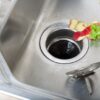Category: Drain Cleaning

5 Tips for Water Damage Restoration
A leaking pipe, storm damage, burst sewage lines, flooding, and other unfortunate events typically lead to costly repairs due to water damage in your home. This will probably cause you a great deal of stress, but there is no need to panic. We have gathered 5 tips for water damage restoration that should be beneficial for you as a homeowner. Continue reading our blog for these helpful tips.
Where to look for damage from water
First things first, you should know which locations to inspect for water damage in your home. Here are some of the more common places:
- Around home appliances
- Pipes
- Insulation
- Drywall
- Your HVAC system
- Floor coverings
Discover the source of the damage
When looking for the source of the water damage in your home, it is important to know that water damage is divided into three different categories.
Category 1: Water damage or clean water damage is the least severe of the three. This type of water damage is caused by a broken pipe, appliance issues, or an overflowing bathtub.
Category 2: Water damage or grey water damage is when the water from your toilet, washing machine, or sump pump has backed up.
Category 3: Water damage or black water damage is the most severe of the three categories. Black water damage will include sewage, rising flood waters, and many other materials that will need to be removed.
Know where to shut off your main water supply
It is important as a homeowner that you know where your main water supply is and that you know how to shut it off. In a water emergency, you should immediately cut off the water supply in your home. Otherwise, the water may spread to different areas and cause more damage.
Clean and sanitize
Cleaning and sanitizing your home are probably the most important tips when restoring water damage. You need to get the affected area or areas as dry as possible. That means mopping and using towels, dehumidifiers, and fans to help eliminate excess moisture. If possible, leave windows and doors open to get a natural air flow to help dry out your home. When sanitizing the different areas, use bleach or an alternative cleaning product to help eliminate potential mold growth or hazardous materials left from the water damage.
Contact Robillard Plumbing
The last of our 5 tips for water damage restoration is to contact Robillard Plumbing and tell us about your situation. We will arrive at the scene as soon as possible. Our trusted professionals will get your water supply squared away and inspect your home to ensure that it is safe. We will then guide you through the flood restoration process and provide peace of mind. Contact us today!
Read More
5 Beneficial Spring Plumbing Projects
Spring is in the air and summer is on the horizon. As we work through spring cleaning and prepare our plumbing for the transition, you may be wondering what else you can do beyond simple maintenance. Read on to learn more about five beneficial spring plumbing projects to consider for your home.
1. Repair or Replace Sump Pump
The sump pump protects your home against flooding, so you want to address concerns ASAP. Sump pumps typically last around 10 years, but you should test them each spring by dumping a bucket of water into the pit. Call Robillard for professional inspection, repair, and/or replacement of your sump pump and battery backup should you notice any issues.
2. Update Faucets and Fixtures in Bathrooms and Kitchen
Installing new faucets and fixtures gives your home an updated, stylish look. Plus, since old fixtures can crack and/or rot without obvious signs of damage, upgrading them can also help the plumbing run properly.
3. Replacing and repairing outside faucets
If you notice there is dripping or notice leaks inside your home when a hose is turned on, there is potentially a pipe that froze in the winter and cracked when the temperature began to warm. This needs to be replaced as soon as possible. Also make sure that you turn your main water valve off and on, because if it is left untouched, it can become difficult to turn on over time.
4. Schedule Professional Drain Cleaning
Without proper drainage, your plumbing could experience wastewater backups or other more serious (and more costly) issues. Prevent these problems by having your drains professionally tested and cleaned as part of your spring-cleaning checklist.
And while you’re at it…
5. Have Your Pipes Professionally Inspected
The piping in your plumbing system isn’t indestructible, and it’s not always easy to tell if major repairs or replacements are needed. The best move is to schedule a professional inspection, especially if you’re experiencing decreased water pressure, irregular noises and smells, and/or other plumbing issues more frequently.
We’ve already seen Minnesota’s unpredictable weather in action this season, and summer is right around the corner. As you prepare your home for the transition, consider adding these beneficial spring projects to the list. And for professional assistance and service, rely on the experienced master plumbers at Robillard.
Contact us to learn more and for all your plumbing service and product needs.
Read More


